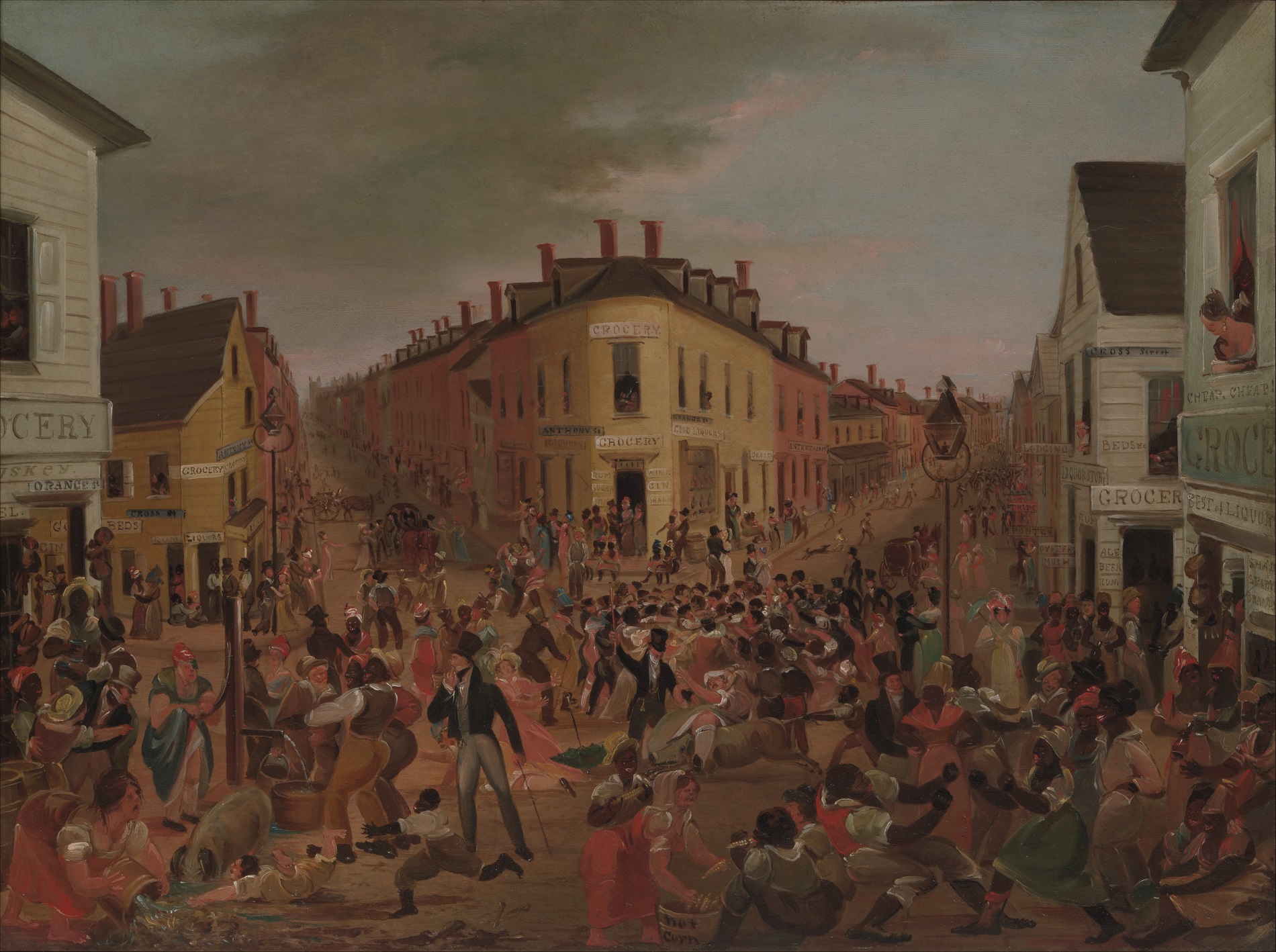Background
The Industrial Revolution led to the rapid movement of people from rural to urban areas. This movement coincided with a big increase in the number of immigrants arriving from other countries. As a result, the populations of U.S. cities exploded. For example, between 1820 and 1860, the population of New York City quadrupled from 200,000 to 800,000.
The new arrivals came in search of jobs. But they also needed places to live. During the rush to expand cities, no one oversaw the development of new neighborhoods and buildings. Desperate workers simply lived wherever there was a space they could afford, and greedy landlords built cheap structures to house them. As a result, neighborhoods were largely segregated by race and social class. Wealthy white and middle-class people moved to the outskirts of their cities. The homes were more expensive, but the air was cleaner, and there was enough space for each family to have their own home. The working class and poor, made up of predominately immigrants and people of color, occupied the less desirable center of the city. In these areas, entire extended families might live together in a single room, and the air was polluted by the exhaust from nearby factories. But rent was cheap, and the tenants lived close enough to their jobs that they could walk to work every day.
About the Document
This painting captures a street scene in the infamous Five Points neighborhood in New York City, which was at one point known as the worst slum in America. But it was also one of the first integrated neighborhoods in the U.S., with free Blacks and European immigrants living side by side. There was always racial tension, which sometimes resulted in violence, but all the inhabitants of Five Points were united in their quest to make a life for themselves in the rapidly changing world of the Industrial Revolution.
This painting includes many clues about the lives of women who inhabited Five Points. In the lower left corner, a white woman is trying to clean while a young child slides in muck nearby. Women of all social classes were expected to keep their homes and children clean and well cared for, but for lower-class women living in slums, the work was much harder. In the lower right corner, a Black woman is fighting a Black man in front of a crowd of amused onlookers. Women of the lower classes frequently had to defend themselves physically but were also ridiculed for this unladylike behavior. The mob at the center indicates another common way lower-class women exerted their power. Rioting women could exact justice and send a message about their wants and needs.
This painting also contains many different examples of women engaged in sex work. Sex work was one of the more accessible ways for poor women to make money without having to leave their homes. As the painting indicates, rich men from other parts of the city would spend evenings “slumming” in Five Points for this reason. Sex workers were judged harshly by moral leaders in the city and were frequently the target of wealthy women reformers.
Vocabulary
- Industrial Revolution: The era of American history marked by the rise of factories and mechanical inventions that transformed daily life.
- slum: A densely populated urban area that is marked by poverty.
Discussion Questions
- Based on this image, who lived, worked, and visited the Five Points neighborhood? How can you tell?
- What would you hear, smell, and feel if you were inside this scene? What does this painting reveal about lives of women in poor and working-class neighborhoods in the mid- 1800s?
- What does this painting reveal about the effects of rapid urbanization during the Industrial Revolution?
Suggested Activities
- APUSH Connection: 4.6 Market Revolution: Society and Culture
- Use this painting to illustrate any discussion of the rapid urbanization that accompanied the Industrial Revolution.
- Ask students to make an annotated guide for this painting. They should number the figures and groups in the scene, and then write short descriptions of what the group represents in the history of urbanization and the Industrial Revolution.
- To learn about the jobs that led some women to more urban areas, see Irish Domestics and Waged Industrial Work.
- Life in slums like Five Points sparked the beginning of the progressive movement. To learn more, see Life Story: Jane Addams.
Themes
AMERICAN CULTURE







